Kobe, Japan
 From Nwe
From Nwe | Kobe 神戸 |
|||
| — Designated city — | |||
| 神戸市 · Kobe City[1] | |||
| From top left: Port of Kobe, Akashi Kaikyō Bridge, Kitano-chō, Kobe Chinatown, Night View from Kikuseidai of Mt. Maya, Kobe Port Tower | |||
|
|||
| Location of Kobe in Hyōgo | |||
| Coordinates: 34°41′N 135°12′E | |||
|---|---|---|---|
| Country | Japan | ||
| Region | Kansai | ||
| Prefecture | Hyōgo | ||
| Government | |||
| - Mayor | Tatsuo Yada | ||
| Area | |||
| - Total | 552.26 km² (213.2 sq mi) | ||
| Population (August 1, 2011) | |||
| - Total | 1,545,410 | ||
| - Density | 2,798.3/km² (7,247.7/sq mi) | ||
| Tree | Camellia sasanqua | ||
| Flower | Hydrangea | ||
| Phone number | 078-331-8181 | ||
| Address | 6-5-1 Kano-chō, Chūō-ku, Kōbe-shi, Hyōgo-ken 650-8570 |
||
| Website: City of Kobe | |||
Kobe(Kōbe-shi) is the capital city of Hyōgo Prefecture and a prominent seaport city in Japan with a population of about 1.5 million. The city is located in the Kansai region of Japan to the west of Osaka. Kobe is classified as one of Japan's 15 designated cities and is a part of the Osaka-Kobe-Kyoto metropolitan sprawl.
It was one of the first cities to open for trade with the Western world in 1868, and as such, it is known as a cosmopolitan port city. Consistent with this reputation, Kobe has a population of 45,000 foreign residents from more than 100 countries.[2][3] The city hosts the Asian or Japan headquarters of a number of companies including Procter & Gamble and Nestlé,[4] and is the point of origin and namesake of Kobe beef. Kobe is also famous for the Arima Onsen (hot springs), and some notable buildings include the Ikuta Shrine as well as the Kobe Port Tower.
The city was severely affected by the 1995 Great Hanshin Earthquake, in which over 5000 residents lost their lives. Kobe has largely recovered from the damage.
History
Kobe's history dates back to the eighth century when the area was known as Ōwada Anchorage (Ōwada-no-tomari).[5][6] The city was briefly the capital of Japan in 1180 C.E. at the end of the Heian period, when Taira no Kiyomori moved his grandson Emperor Antoku to Fukuhara. The exact location is not known for certain, but is probably the neighborhood of the same name in Hyōgo-ku, Kobe. The Emperor returned to Kyoto after about five months.[6] As the port grew, it became an important hub for trade with China and other countries, and in the thirteenth century, the city came to be known by the name Hyōgo Port (Hyōgo-tsu).[7]
During this time, Hyōgo Port along with northern Osaka comprised the province of Settsu. Later, during the Edo period, the eastern parts of present-day Kobe came under the jurisdiction of the Amagasaki Domain (Amagasaki-han) and the western parts under that of the Akashi Domain (Akashi-han), while the center was controlled directly by the Tokugawa shogunate.[8][9] It was not until the abolition of the former feudal clan system, known as han, in 1871 and the establishment of the current prefecture system that the area became politically distinct.
Following the Meiji Restoration and the end of the policy of seclusion (Sakoku), in 1868, Hyōgo Port was one of the first ports to open for trade with Western countries.[10] The region has since been identified with the West, and many foreign residences from the period remain in Kobe's Kitano area (Kitano-cho).[11]
Kobe, as it is known today, was founded on April 1, 1889, and was designated on September 1, 1956 by government ordinance. The history of Kobe is closely tied to that of the Ikuta Shrine, and in fact the name "Kobe" derives from kanbe, an archaic name for those who supported the shrine.[12][13]
During the course of World War II, Kobe was bombed with incendiary bombs by B-29 (B-29 Superfortress) bombers on March 17, 1945, causing the death of 8,841 residents and destroying 21 percent of Kobe's urban area. It is this incident that inspired the well-known Studio Ghibli animated film Grave of the Fireflies and the 1967 book Grave of the Fireflies by Akiyuki Nosaka on which it was based.
Following continuous pressure from citizens, on March 18, 1975, the Kobe City Council passed an ordinance banning vessels carrying nuclear weapons from Kobe Port. This effectively prevented any U.S. warships from entering the port, policy being not to disclose whether any warship is carrying nuclear weapons. This nonproliferation policy has been termed the "Kobe Formula" (Japan's non-nuclear policy).[14][15]
On January 17, 1995 an earthquake measuring at 7.3 on the Richter Scale occurred at 05:46 A.M. JST near the city. There were 6,434 people killed, 300,000 were made homeless, and large portions of the port facilities and other parts of the city were destroyed. It was one of the most costly natural disasters in modern history. The earthquake notably destroyed the Hanshin Expressway, an elevated freeway which dramatically toppled over. Within Japan, the earthquake is known as the Great Hanshin Earthquake (or the Hanshin-Awaji Earthquake). To commemorate Kobe's recovery from the 1995 quake, the city holds an annual event called the Kobe Luminare, where every December the city hall is decorated with illuminated metal archways.
Kobe was Japan's busiest port and one of Asia's top ports until the Great Hanshin Earthquake occurred.[16] Kobe has since dropped to the thirty-second busiest port worldwide (as of 2004).[17] In spite of the earthquake, Kobe remains Japan's third busiest port (as of 1999).[16]
Geography
Wedged in between the coast and the mountains, the city of Kobe is long and narrow. To the east is the city of Ashiya (Ashiya Hyōgo), while the city of Akashi (Akashi Hyōgo) lies to its west.
The landmark of the port area is the red steel Kobe Port Tower (hyperboloid structure). A giant ferris wheel sits in nearby Harborland, a notable tourist promenade, and offers spectacular views of the surroundings including the bay area, especially at night. Two artificial islands, Port Island and Rokko Island, have been constructed to give the city room to expand. The city serves as one of the most important seaports in Japan.
Away from the seaside at the heart of Kobe lie the Motomachi and Kokashita districts as well as Kobe's Chinatown, Nankinmachi, all well-known retail areas. A multitude of train lines cross the city from east to west. The main transport hub is Sannomiya Station, with the eponymous Kobe Station located to the west and the Shinkansen Shin-Kobe Station to the north.
Mount Rokko overlooks Kobe at an elevation of 931 meters. During the autumn season, it is famous for the rich change in colors of its forests.
Wards
Kobe has nine wards (ku):
- Nishi-ku
- Kita-ku
- Tarumi-ku
- Suma-ku
- Nagata-ku
- Hyōgo-ku
- Chūō-ku
- Nada-ku
- Higashinada-ku
Culture
Kobe is famous for its Kobe beef and Arima Onsen (hot springs). As of 2002, there are 1,450 public parks, giving Kobe a reputation for being "green," and a very livable place for families. The most notable building is the Ikuta Shrine, founded in the third century B.C.E., which later featured prominently in the battle of Ichi–no–Tani (Gempei War) between two warring clans that determined the outcome of modern Japan. Another notable landmark is the Kobe Port Tower. It is well known for the night view of the city both from the coast and its exotic atmosphere which has mainly come from its history as a port city.
The city is widely associated with the cosmopolitanism and fashion, encapsulated in the Japanese phrase, "If you can't go to Paris, go to Kobe."[18] The biannual fashion event Kobe Collection is held in Kobe,[19] while the jazz festival "Kobe Jazz Street" has been held every October at jazz clubs and hotels since 1981.[20]
After the opening of Japan, Kobe became very much an attraction to an international community, that gathered diplomats and foreign dignitaries, including Rudyard Kipling, around the famous "Oriental Hotel". Nearby Mount Rokko is the site of Japan's first golf course, Kobe Golf Club, established by British expatriate Arthur Hasketh Groom in 1903,[21] and Japan's first mosque, Kobe Mosque, built in 1935.[22] The city also hosts the Kobe Regatta & Athletic Club, founded in 1870 by Alexander Cameron Sim,[23] a prominent foreign cemetery, and a number of Western-style residences from the nineteenth century. Kobe is home to Kobe University, which traces its roots back to 1902. Of a total population of about one and a half million residents, there is an international population of about 44,000: comprised of Koreans, Chinese, Vietnamese, Indians, North Americans, British, Germans, and others, including a Jewish community.
Most of the movie Sayonara (1957) starring Marlon Brando takes place in Kobe. Kobe is also the setting of the Studio Ghibli antimated film Grave of the Fireflies. (1988) directed by Isao Takahata.
Kobe is well-known for its sake: The area of Nada-ku along with Fushimi-ku in Kyoto accounts for 45 percent of Japan's sake production.[24]
Transportation
Sannomiya Station is the main hub in Kobe, serving as the transfer point for the three major intercity rail lines. The JR Kobe Line connects Kobe to Osaka and Himeji while both the Hankyu Kobe Line and the Hanshin Main Line run from Kobe to Umeda Station in Osaka. In addition, Kobe Municipal Subway provides access to the Sanyō Shinkansen at Shin-Kobe Station. Sanyō Electric Railway trains from Himeji reach Sannomiya via the Kobe Rapid Railway.
Other rail lines in Kobe include Kobe Electric Railway which runs north to Sanda and Arima Onsen. Hokushin Kyuko Railway connects Shin-Kobe Station to Tanigami Station on the Kobe Electric Railway. Kobe New Transit runs two lines, the Port Island Line from Sannomiya to Kobe Airport and the Rokko Island Line from JR Sumiyoshi Station to Rokko Island.
Kobe is a hub in a number of expressways, including the Meishin Expressway (Nagoya - Kobe) and the Hanshin Expressway (Osaka - Kobe).[25] Other expressways include the Sanyō Expressway (Kobe - Yamaguchi) and the Chūgoku Expressway (Osaka - Yamaguchi). The Kobe-Awaji-Naruto Expressway (Honshū-Shikoku Bridge Project) runs from Kobe to Naruto via Awaji Island and includes the Akashi-Kaikyo Bridge, the longest suspension bridge in the world.
The new Kobe Airport was opened on a newly-built reclaimed island on February 16, 2006.
Education
The city of Kobe directly administers 169 elementary and 83 middle schools, with enrollments of approximately 80,200 and 36,000 students, respectively.[26] Kobe also directly controls seven of the city's twenty-eight full-time public high schools, while the remainder are administered by the Hyogo Prefectural Board of Education.[26][27] In addition to public schools, four elementary schools, 14 middle schools and 25 high schools are run privately within the city.[28][29][30]
Kobe is home to 19 public and private universities and institutes of higher learning, including Kobe University and Konan University.[31]
Universities
Public universities
- Kobe University. Retrieved July 18, 2007.
- University of Hyōgo (Prefectural university). Retrieved July 18, 2007.
- Kobe City University of Foreign Studies. Retrieved July 18, 2007.
- Kobe City College of Nursing. Retrieved July 18, 2007.
Private universities
- Konan University. Retrieved July 18, 2007.
- Konan Women's University. Retrieved July 18, 2007.
- Kobe Kaisei College (Women's university). Retrieved July 18, 2007.
- Kobe Gakuin University. Retrieved July 18, 2007.
- Kobe Design University. Retrieved July 18, 2007.
- Kobe International University. Retrieved July 18, 2007.
- Kobe Shoin Women's University. Retrieved July 18, 2007.
- Kobe Women's University. Retrieved July 18, 2007.
- Kobe Shinwa Women's University. Retrieved July 18, 2007.
- Kobe Pharmaceutical University. Retrieved July 18, 2007.
- Kobe Yamate University. Retrieved July 18, 2007.
- University of Marketing and Distribution Science. Retrieved July 18, 2007.
Primary and secondary schools
Public schools
Elementary and junior high schools are operated by the city of Kobe, while high schools are operated by the Hyogo Prefectural Board of Education (Retrieved July 18, 2007.).
A list of Hyogo Prefectural high schools in Japanese is here (Retrieved July 18, 2007).
Private schools
Lists of private schools in Hyogo Prefecture at High School Middle School Elementary School in Japanese. (Retrieved July 18, 2007.)
International schools
- Marist Brothers International School (Montessori-12), located in Suma-ku. (Retrieved July 18, 2007.)
- Canadian Academy (K-12), located on the man-made Rokko Island. (Retrieved July 18, 2007.)
- St. Michael's International School (PreK-6), a small British elementary school located in Kitano-cho, affiliated with Anglican Church. (Retrieved July 18, 2007.)
- Deutsche Schule Kobe - European School, founded 1909, curriculum in German and English. (Retrieved July 18, 2007.)
Research
- RIKEN Kobe Institute - Center for Developmental Biology[32]
Economy
Kobe is both an important port and manufacturing center within the Hanshin Industrial Region. Kobe is the busiest container port in the region, surpassing even Osaka, and the fourth busiest in Japan. As of 2004, the value of manufactured goods produced and exported from Kobe was ¥2.5 trillion. The four largest sectors in terms of value of goods produced are small appliances, food products, transportation equipment, and communication equipment making up over fifty percent of Kobe's manufactured goods. In terms of numbers of employees, food products, small appliances, and transportation equipment make up the three largest sectors.[33] The city's total GDP for this same year was ¥6.3 trillion, which amounts to 34 percent of the GDP for Hyōgo Prefecture and approximately eight percent of the GDP for the whole Kansai region.[34][35] Per capita income for the year was approximately ¥2.7 million.[34]
Major companies and institutes
Japanese companies which have their headquarters in Kobe include ASICS, a shoe manufacturer; Daiei, a department store chain; Kawasaki Heavy Industries, an automobile and ship manufacturer; and Kobe Steel. Other companies include the confectionary manufacturers Konigs-Krone and Morozoff Ltd., Sun Television Japan and UCC Ueshima Coffee Co.
There are over 100 international corporations with East-Asia or Japan headquarters in Kobe. Of these, 24 are from China, 18 from the United States, and nine from Switzerland.[36] Some prominent corporations include Eli Lilly and Company, Nestlé, Procter & Gamble, Tempur-Pedic, and Toys "R" Us.[4]
Kobe is the site of a number of research institutes, such as the RIKEN Kobe Institute Center for developmental biology and medical imaging techniques,[37] the National Institute of Information and Communications Technology Kobe Advanced ICT Research Center,[38] the National Research Institute for Earth Science and Disaster Prevention,[39] and the Asian Disaster Reduction Center.[40]
Major factories and research institutes in Kobe
Facilities
- Mitsubishi Heavy Industries
- - Shipbuilding, Marine structures
- - Mainly,high value products such as Container ship, Submarine, Research Vessels and Vehicles, Nuclear reactor, Satellite.
- Kawasaki Heavy Industries
- - Shipbuilding , Marine structures , Trains
- Kobe Steel
- Mitsubishi Electric
- Matsushita Electric Industrial (Panasonic)
Laboratories, Research Institutes
- Bayer Kobe Reseach Center . Retrieved July 18, 2007.
- Eli Lilly and Company
- Boehringer-Ingelheim
- Procter & Gamble
- - It is also an East-Asia or Japan headquarter.
- Kobe Steel
- Mitsubishi Electric
- RIKEN (A public corporation funded by the government. Natural sciences research institute.)
- - Center for Developmental Biology.
- - Next-Generation Supercomputer Center (From 2010)
Major company headquarters in Kobe
World headquarters
- ASICS
- Daiei
- Kawasaki Heavy Industries
- Kobe Steel
- Konigs Krone
- Morozoff Ltd.
- SUN-TV
- UCC Ueshima Coffee Co.
- Vita Craft Japan
- World Co., Ltd
Asia/Japan headquarters
A number of major international corporations have their East-Asia or Japan headquarters in Kobe:[4]
- Eli Lilly and Company
- Nestlé
- Procter & Gamble
- Tempur-Pedic
- Toys "R" Us
Sport teams
| Club | Sport | League | Venue | Established |
|---|---|---|---|---|
| Kobe Steel Kobelco Steelers | Rugby | Top League | Kobe Wing Stadium | 1928 |
| Orix Buffaloes | Baseball | Pacific League | Skymark Stadium Osaka Dome |
1938 |
| Vissel Kobe | Football (soccer) | J.League | Kobe Wing Stadium | 1995 |
| Nikkō Kobe IceBucks (shared with Nikkō, Tochigi) |
Ice Hockey | Asia League | 1999 |
Sister Cities and Sister Ports
Kobe has six sister cities and a number of other affiliations.[41] They are:
 Seattle, Washington, United States (1957)
Seattle, Washington, United States (1957) Marseille, France (1961)
Marseille, France (1961) Rio de Janeiro, Brazil (1969)
Rio de Janeiro, Brazil (1969) Riga, Latvia (1974)
Riga, Latvia (1974) Brisbane, Australia (1985)
Brisbane, Australia (1985) Barcelona, Catalonia, Spain (1993)
Barcelona, Catalonia, Spain (1993)
Sister Ports:
 Rotterdam, Netherlands (1967)
Rotterdam, Netherlands (1967) Seattle, Washington, USA (1967)
Seattle, Washington, USA (1967)
Other City Affiliations:
 Tianjin, People's Republic of China (friendly city) (1973)
Tianjin, People's Republic of China (friendly city) (1973) Philadelphia, Pennsylvania, United States (friendship and cooperation city) (1986)
Philadelphia, Pennsylvania, United States (friendship and cooperation city) (1986)
Gallery
Notes
- ↑ Kobe's official English name
- ↑ City of Kobe - "Outline," retrieved February 3, 2007
- ↑ City of Kobe "Overall Statistics, Foreign Residents" kobe (in English) retrieved February 2, 2007
- ↑ 4.0 4.1 4.2 Hyogo-Kobe Investment Guide - "List of Foreign Enterprises and Examples," retrieved February 8, 2007
- ↑ City of Kobe - "Port of Kobe: History,"kobe. retrieved February 2, 2007
- ↑ 6.0 6.1 Kobe City Info - "History,"kobecityinfo.com. retrieved February 2, 2007
- ↑ Hyogo Internationl Tourism Guide - "Hyogo Prefecture."hyogo-tourism.jp. retrieved February 2, 2007
- ↑ City of Kobe - "Old Kobe" (Japanese), retrieved February 16, 2007
- ↑ City of Ashiya - "An Outline History of Ashiya," retrieved February 16, 2007
- ↑ Hyogo Prefectural Government - "Hyogo Overview," retrieved February 2, 2007
- ↑ Japan Reference - "Kobe," retrieved February 2, 2007
- ↑ Nagasaki University - "Ikuta Shrine" hikoma. retrieved February 3, 2007
- ↑ Entry for 「神戸(かんべ)」. book by Izuru Shinmura, (Kojien, fifth ed., 1998, ISBN 4000801112)
- ↑ Kobe City Council - "Resolution on the Rejection of the Visit of Nuclear-Armed Warships into Kobe Port," March 18, 1975., retrieved February 16, 2007
- ↑ Naoki Kamimura, "Japanese Civil Society and U.S.-Japan Security Relations in the 1990s." retrieved from International Physicians for the Prevention of Nuclear War ippnw.org. on February 2, 2007
- ↑ 16.0 16.1 Maruhon Business News - Port Conditions in Japan, retrieved January 23, 2007
- ↑ American Association of Port Authorities - "World Port Rankings 2004," retrieved February 2, 2007
- ↑ Sally Hassan, April 9, 1989, "Where Japan Opened a Door To the West." New York Times, retrieved from New York Times Website on February 7, 2007.
- ↑ Kobe Collection Official Website (Japanese), retrieved February 27, 2007
- ↑ Kobe Jazz Street, retrieved March 12, 2007
- ↑ Golf Club Atlas - "Gliding Past Fuji - C.H. Alison in Japan," retrieved February 7, 2007
- ↑ M. Penn, "Islam in Japan," Harvard Asia Quarterly 10 (1) (Winter 2006), retrieved February 15, 2007
- ↑ Kobe Regatta and Athletic Club - "a distinguished history," retrieved February 7, 2007
- ↑ Kansai Window - "Japan's number one sake production," retrieved February 6, 2007
- ↑ Hyogo-Kobe Investment Guide - "Domestic Access," retrieved February 15, 2007
- ↑ 26.0 26.1 City of Kobe - "Number of municipal schools and students" (Japanese), retrieved July 2, 2007
- ↑ Hyogo Prefectural Board of Education - "Hyogo prefectural public schools at a glance" (Japanese), retrieved July 2, 2007
- ↑ Hyogo Prefectural Government - "Private elementary schools" (Japanese), retrieved July 2, 2007
- ↑ Hyogo Prefectural Government - "Private middle schools" (Japanese), retrieved July 2, 2007
- ↑ Hyogo Prefectural Government - "Private high schools" (Japanese), retrieved July 2, 2007
- ↑ eduon! - "Kobe universities at a glance" (Japanese), retrieved July 2, 2007
- ↑ RIKEN Center for Developmental Biology, cdb.riken. (in English) retrieved March 13, 2007
- ↑ Kobe City Report on Census of Manufacturers, 2004 (Japanese), retrieved March 30, 2007
- ↑ 34.0 34.1 Hyogo Industrial Advancement Center - "Industry Tendencies in Various Areas of Hyogo Prefecture" (Japanese), retrieved July 3, 2007
- ↑ Cabinet Office, Government of Japan - "2004 Prefectural Economy Survey" (Japanese), retrieved July 3, 2007
- ↑ "Number of foreign corporations with headquarters in Kobe passes 100." (Japanese) in Nikkei Net. retrieved from NIKKEI.net on July 3, 2007.
- ↑ RIKEN Center for Developmental Biology RIKEN Kobe Institute, retrieved March 13, 2007, retrieved June 26 2007
- ↑ National Institute of Information and Communications Technology Kobe Advanced ICT Research Center, retrieved June 26, 2007
- ↑ National Research Institute for Earth Science and Disaster Prevention, retrieved June 12, 2007
- ↑ Asian Disaster Reduction Center, retrieved June 12, 2007
- ↑ City of Kobe - "Sister City, Friendly City, Friendship & Cooperation City," retrieved February 15, 2007
References
ISBN links support NWE through referral fees
- Dodd, Jan, and Simon Richmond. 2005. The rough guide to Japan. London: Rough Guides. ISBN 1843532727
- Kerr, Alex. 1996. Lost Japan. Lonely Planet journeys. Hawthorn, Vic., AU: Lonely Planet Publications. ISBN 0864423705
- Nihon Kōtsū Kōsha. 1990. Travel guide: Kyoto, Nara, Osaka, Kobe. Tokyo: Japan Travel Bureau.
- Reiber, Beth, and Janie Spencer. 2004. Frommer's Japan. Hoboken, NJ: Wiley Pub. ISBN 0764573802
- Rowthorn, Chris. 2005. Japan. Footscray, Vic: Lonely Planet. ISBN 1740599241
- Zarifeh, Ramsey. 2002. Japan by rail. Hindhead, Surrey, UK: Trailblazer Publications. ISBN 1873756232
External links
All links retrieved April 21, 2018.
Credits
New World Encyclopedia writers and editors rewrote and completed the Wikipedia article in accordance with New World Encyclopedia standards. This article abides by terms of the Creative Commons CC-by-sa 3.0 License (CC-by-sa), which may be used and disseminated with proper attribution. Credit is due under the terms of this license that can reference both the New World Encyclopedia contributors and the selfless volunteer contributors of the Wikimedia Foundation. To cite this article click here for a list of acceptable citing formats.The history of earlier contributions by wikipedians is accessible to researchers here:
The history of this article since it was imported to New World Encyclopedia:
Note: Some restrictions may apply to use of individual images which are separately licensed.
↧ Download as ZWI file | Last modified: 02/03/2023 21:06:16 | 38 views
☰ Source: https://www.newworldencyclopedia.org/entry/Kobe | License: CC BY-SA 3.0
 ZWI signed:
ZWI signed: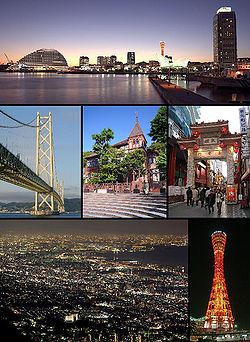


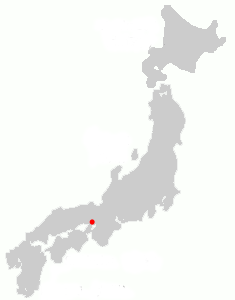
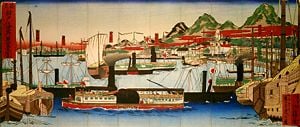
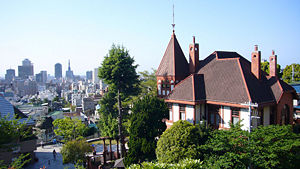
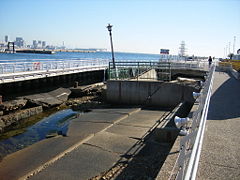
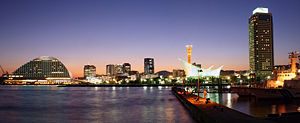
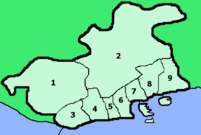

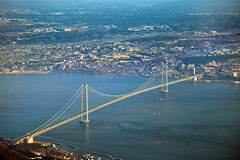
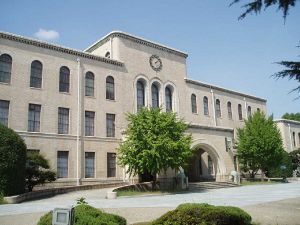
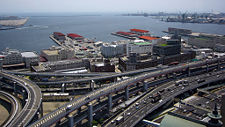







 KSF
KSF